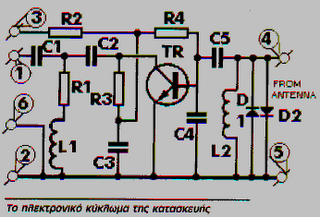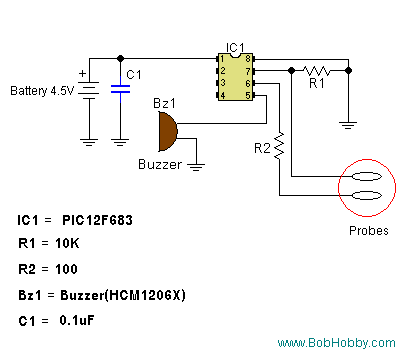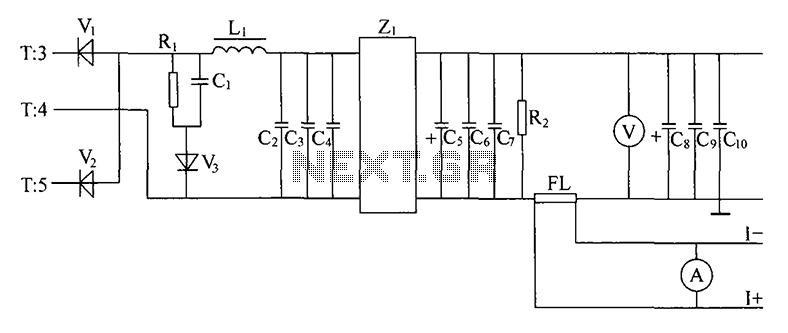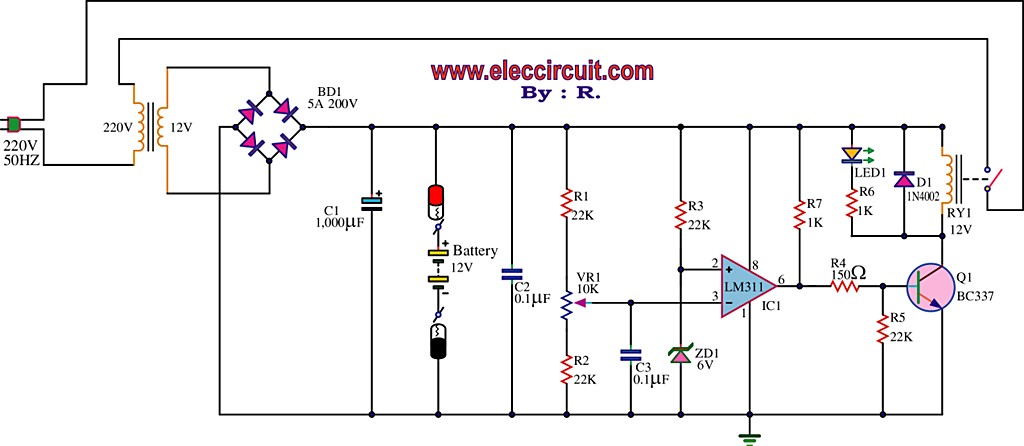
Adjustable Vfo Temperature Compensator Circuit
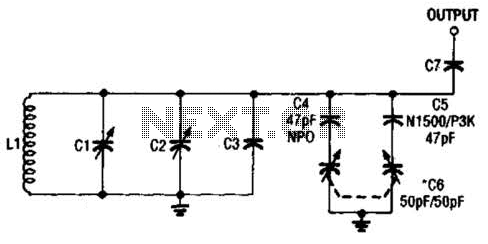
The use of a differential capacitor enables temperature compensation in an LC circuit utilizing an NFO and N1500 ceramic. C6 serves as a differential capacitor featuring two stators and one common rotor. When one stator's capacitance reaches its maximum value, the other stator's capacitance is at its minimum. Additionally, LI, CI, C2, and C3 function as tuning, trimming, and fixed capacitors, respectively.
The described circuit employs a differential capacitor, specifically C6, designed to enhance the performance stability of the LC circuit across varying temperature conditions. The differential capacitor's architecture, consisting of two stators and a common rotor, allows for precise adjustments. As the rotor is manipulated, one stator's capacitance increases while the other's decreases, effectively maintaining a balanced capacitance that compensates for temperature-induced variations. This mechanism is critical in applications where frequency stability is paramount, such as in radio frequency (RF) circuits.
The additional components, LI, CI, C2, and C3, serve specific roles in the circuit. LI is typically an inductor that, in conjunction with the capacitors, forms the LC tank circuit essential for resonance. CI, a variable capacitor, is used for fine-tuning the resonant frequency, allowing the circuit to adapt to specific operational requirements. C2 and C3, being a combination of trimming and fixed capacitors, provide necessary adjustments to the overall capacitance, ensuring that the circuit achieves the desired performance characteristics.
In summary, the integration of a differential capacitor within the LC circuit, along with the supporting tuning and trimming capacitors, facilitates enhanced temperature compensation and frequency stability, making it suitable for precision electronic applications. Use of a differential capacitor allows temperature compensation of LC circuit using an NFO and N1500 ceramic. C6 is a differential capacitor that has two stators and one common rotor. When one capacitance (stator) is maximum, the other is minimum. LI, CI, C2, and C3 are tuning, trimming, and fixed capacitors, respectively.
The described circuit employs a differential capacitor, specifically C6, designed to enhance the performance stability of the LC circuit across varying temperature conditions. The differential capacitor's architecture, consisting of two stators and a common rotor, allows for precise adjustments. As the rotor is manipulated, one stator's capacitance increases while the other's decreases, effectively maintaining a balanced capacitance that compensates for temperature-induced variations. This mechanism is critical in applications where frequency stability is paramount, such as in radio frequency (RF) circuits.
The additional components, LI, CI, C2, and C3, serve specific roles in the circuit. LI is typically an inductor that, in conjunction with the capacitors, forms the LC tank circuit essential for resonance. CI, a variable capacitor, is used for fine-tuning the resonant frequency, allowing the circuit to adapt to specific operational requirements. C2 and C3, being a combination of trimming and fixed capacitors, provide necessary adjustments to the overall capacitance, ensuring that the circuit achieves the desired performance characteristics.
In summary, the integration of a differential capacitor within the LC circuit, along with the supporting tuning and trimming capacitors, facilitates enhanced temperature compensation and frequency stability, making it suitable for precision electronic applications. Use of a differential capacitor allows temperature compensation of LC circuit using an NFO and N1500 ceramic. C6 is a differential capacitor that has two stators and one common rotor. When one capacitance (stator) is maximum, the other is minimum. LI, CI, C2, and C3 are tuning, trimming, and fixed capacitors, respectively.
